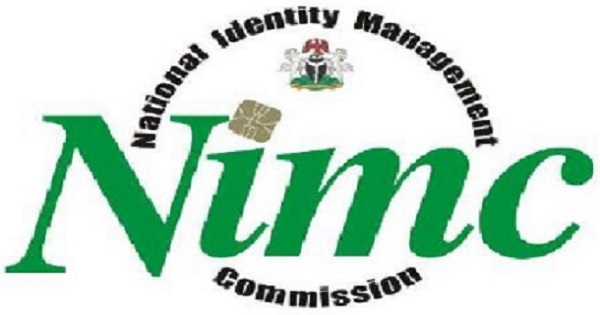E-Business
ASCSN Says NIMC Can Help Improve Security, Fight Corruption

The organised Labour has said that the National Identity Management Commission (NIMC), can improve the security situation and fight against corruption in Nigeria in no small measure if the Federal Government empowers the agency to carry out its statutory functions effectively and efficiently.

Comrade Asekokhai Lucky, chairman, Association of Senior Civil Servants of Nigeria (ASCSN) NIMC Unit,said this when he addressed some issues bordering on the crucial roles and the responsibility the commission is supposed to play in the area of security, fight against corruption and reaching out to the vulnerable especially with the crisis of COVID-19 pandemic.
According him, “since 27 February, 2020 the first index case of Covid-19 pandemic was recorded in the country, things have never been the same again for Federal Government, state governments, local government areas and at the individual level.”
While he commended the Federal Government for taken all necessary actions to protect all residents in Nigeria, as well as provide succor such as palliatives to vulnerable Nigerians whose means of livelihood are affected by the proactive measures, he however said that the FG’s efforts regarding provision of palliatives have been riddled with controversies owing to the facts that there was no identity authentication or real time identification of the recipients.
He on went to say that the shortcomings that riddled the sharing of FG provided palliatives was “a void the NIMC can bridge if not for neglect with the National Identity Number (NIN) and Payment applet embedded in the GMPC e-ID Card issued by NIMC”.
Quoting the National Bureau of Statistics (NBS ), the labour leader noted that over 82.9 million Nigerians lived below the poverty line of N137,430 per annum which translates to about #375 per day; which by implication means that 40.1% of the population live in poverty.
He also cited the National Social Register of the Poor and Vulnerable Households Distribution by States as at 31st March, 2020; which says that the numbers of vulnerable households and individuals is about 2.6 million and 11 million respectively.
“However, on 2nd April, 2020 the Minister of Humanitarian Affairs and Disaster Management, Sadiya Umar Farouq said that 2.6 million vulnerable persons are currently to benefit from the Federal Government cash transfer intervention programme.
“But ever since the FG kick started the palliative distribution programme and conditional cash transfer, several Nigerians had accused it of been high jacked by middlemen at the detriment of the real vulnerable households. Others argued that it was highly politicised or skewed to favour members of a particular political parties etc.
“These have made several concerned Nigerians to call for the adoption of digital payment method, others suggested to identify the vulnerables by BVN, INEC records etc.”
Onward, he said; “Nonetheless, in midst of these intractable controversies, it is appalling and glaring that only a few spirited Nigerians like Nurudeen Alimi publication in Tribune Online of April 20, 2020 titled: ‘Covid-19 : Place of NIMC in Access to Social Security /Palliative in Nigeria,’ had called the Federal Government attention to the nearest solution to the problem which is the use of the National Identification Number (NIN) issued by the National Identity Management Commission (NIMC) to identify , authenticate and provide a real time identity of the real vulnerables.
“It is no doubt that NIMC has the only all-inclusive and reliable Database in Nigeria. BVN with its about 40 million records is restricted to holders of bank account numbers which most vulnerables Nigerians don’t have. INEC with over 84 million records are only restricted to Nigerians of voting age from 18 years and above, FRSC, NIS, NCC-SIM registration as well have restrictions etc.
“The incidences of disappearance of Covid 19 index cases in some states of the federation without traces or rather difficult to trace can be taken care of by their NIN especially if NIMC is adequately funded to get all Nigerians registered and provided NIN which is equivalent to USA Social Security Number, UK ‘s National Insurance Number etc .
“Currently the about 42 million of Nigerians with their NIN registered with NIMC is actually inadequate for Nigeria’s about 200 million Nigeria population. Hence, this is why the Labour Situation Room on Covid-19 on 11th May, 2020 called on FG to empower NIMC to register all Nigerians.
“In as much as the COVID-19 had caused NIMC to halt enrollment as the staff are exposed to the hazards of physical contact with applicants or enrollees and other hazards as a result of daily exposure to computer rays for which the Union has been pursuing for the restoration of Hazard and other allowances, as well as Paramilitary Salary Structure to enable NIMC Staff deliver this all important National assignment seamlessly to Nigerians; we will also appeal to FG to please approve same for NIMC Staff.”
E-Business
Attackers Target Employees with Fake HR Updates

Kaspersky has identified an advanced phishing campaign targeting employees with personalised emails and attached documents disguised as HR policy updates.

This campaign marks a significant escalation in phishing tactics, with attackers tailoring not only the email body, but also the attachments by addressing individual recipients, showcasing an unprecedented level of customisation. The goal was to lure the victim into entering their corporate email credentials.
The attackers likely prepared by parsing employee names to make the campaign targeted and more convincing.
The emails feature a deceptive body: a fraudulent “verified sender” badge to build trust, the recipient’s name, and an invitation to open the attached file to review remote work protocols, benefits administration and security standards. However, the whole email body is in reality just an image with no real text in it; this is done to bypass email filters.
The attached document, posing as an updated “Employee Handbook,” does not contain any actual guidelines – only a title page, a table of contents with the items that have supposedly been changed highlighted in red, a page with a QR code, supposedly for going to the full document and common instructions on how to read QR codes using a phone. The document features the victim’s name multiple times to convince that this document was created specifically for them.
If the victim scans the QR code and follows the link, they land on a fraudulent page where they are asked to enter their corporate credentials, which is what the attackers are hunting for.
“This campaign demonstrates a new level of sophistication in phishing attacks, and we may be seeing a new mailing automation mechanism that generates a separate attached document and a separate image for the email body for each recipient.
“This tactic allows to scale the attack and at the same time possibly evade traditional defenses. Organisations must prioritise advanced security measures and employee education to stay ahead of these threats,” comments Roman Dedenok, Anti-Spam Expert at Kaspersky.
E-Business
Temu Joins INTA to Combat Counterfeits and Elevate IP Standards Worldwide

Temu, the global online marketplace, has joined the International Trademark Association (INTA) as a corporate member and serves on its Anti-Counterfeiting Committee.

INTA is a global association that brings together more than 6,700 organizations, representing over 37,000 trademark professionals and brand owners across 181 countries. By joining INTA, Temu deepens its commitment to building a trusted online marketplace and advancing global IP protection through broader, cross-industry collaboration.
“INTA welcomes TEMU’s willingness to engage in anticounterfeiting initiatives, including in the Association’s annual Anticounterfeiting Workshop and Online Takedown Certificate Program which serve to share best practices and connect stakeholders,” said Alastair Gray, Director of Anti-Counterfeiting, INTA. “Constructive collaboration with these efforts can contribute to the protection of intellectual property rights for INTA members and support the removal of counterfeit products from the platform which ultimately protects consumers.”
At the 2025 INTA Annual Meeting held in San Diego in May, Temu participated in the Anti-Counterfeiting Committee Roundtable, serving as a moderator to facilitate discussions among brand owners, online platforms, and government officials on emerging technologies, best practices for collaboration, and strategies to strengthen global anti-counterfeiting efforts.
“Joining INTA and serving on its Anti-Counterfeiting Committee reflects Temu’s ongoing commitment to ensuring a trustworthy online shopping experience,” said a Temu spokesperson. “We value collaboration with industry peers and stakeholders and are dedicated to advancing collective efforts in intellectual property protection.”
Temu also participates in INTA-led online workshops, including the Online Platform Notice and Takedown Certification Program, which outlines the latest procedures and best practices used by e-commerce platforms and social media companies. These workshops aim to enhance the quality and accuracy of rights-holder notices, promoting more effective takedown processes and content moderation.
Since launching in 2022, Temu has made significant investments in IP enforcement. Its measures include comprehensive seller vetting and compliance training, 24/7 algorithmic monitoring with manual review, a dedicated IP protection portal and brand registry to streamline takedown submissions, and an internal enforcement team that handles claims with speed and accuracy.
E-Business
Huawei Unveils AI Computing System to Challenge Nvidia’s Flagship Product

China’s Huawei Technologies unveiled an AI computing system on Saturday that an industry expert said rivals Nvidia’s most advanced product, as the company aims to expand its footprint in the country’s booming AI sector.

The CloudMatrix 384 system made its public debut at the World Artificial Intelligence Conference (WAIC), a three-day event in Shanghai, attracting a large crowd to Huawei’s booth with its showcase of cutting-edge AI innovations.
The system has attracted significant interest from the global AI community since Huawei (HWT.UL) first introduced it in April. Industry analysts see it as a direct challenger to Nvidia’s GB200 NVL72, the most advanced system-level offering currently available from the U.S. chipmaker.
In an April article, Dylan Patel, founder of semiconductor research firm SemiAnalysis, stated that Huawei now possesses AI system capabilities that could surpass those of Nvidia.
Huawei staff at its WAIC booth declined to comment when asked to introduce the CloudMatrix 384 system.
A spokesperson for Huawei did not respond to questions.
Huawei has become widely regarded as China’s most promising domestic supplier of chips essential for AI development, even though the company faces U.S. export restrictions.
Nvidia CEO, Jensen Huang told Bloomberg in May that Huawei had been “moving quite fast” and named the CloudMatrix as an example.
The CloudMatrix 384 system features 384 of Huawei’s latest 910C chips and, according to SemiAnalysis, surpasses Nvidia’s GB200 NVL72 in certain performance metrics, despite the latter using 72 B200 chips.
SemiAnalysis attributes this performance advantage to Huawei’s strong system design, which offsets the lower power of individual chips by leveraging a greater number of them and incorporating system-level innovations.
Huawei describes the system as utilizing a “supernode” architecture that enables ultra-high-speed interconnectivity between chips.
In June, Zhang Pingan, CEO, Huawei Cloud confirmed that the CloudMatrix 384 was already operational on Huawei’s cloud platform.

 E-Business2 days ago
E-Business2 days agoHuawei Unveils AI Computing System to Challenge Nvidia’s Flagship Product

 E-Financial2 days ago
E-Financial2 days agoUnion Bank Rewards Customers with ₦5 Million Each in Save and Win Palli Promo Season 4 Grand Finale

 E-Financial2 days ago
E-Financial2 days agoEdun, Finance Minister Inaugurates NDIC New Management

 News2 days ago
News2 days agoLawyers Drags NLS to Court for Alleged Election Fraud, Data Violation

 Telecom1 day ago
Telecom1 day agoGlo Boosts Network Capacity for Enhanced Customer Experience

 General News2 days ago
General News2 days agoNew Tax Law Empowers NRS to Fine Offenders up to N10m

 News1 day ago
News1 day agoTranscorp Power Posts Strong Half-Year Profit, Declares ₦11.25Bn Dividend

 Broadcasting2 days ago
Broadcasting2 days agoCourt Upholds AVRS Legal Rights to Licence Audiovisual Works in Hotels


























